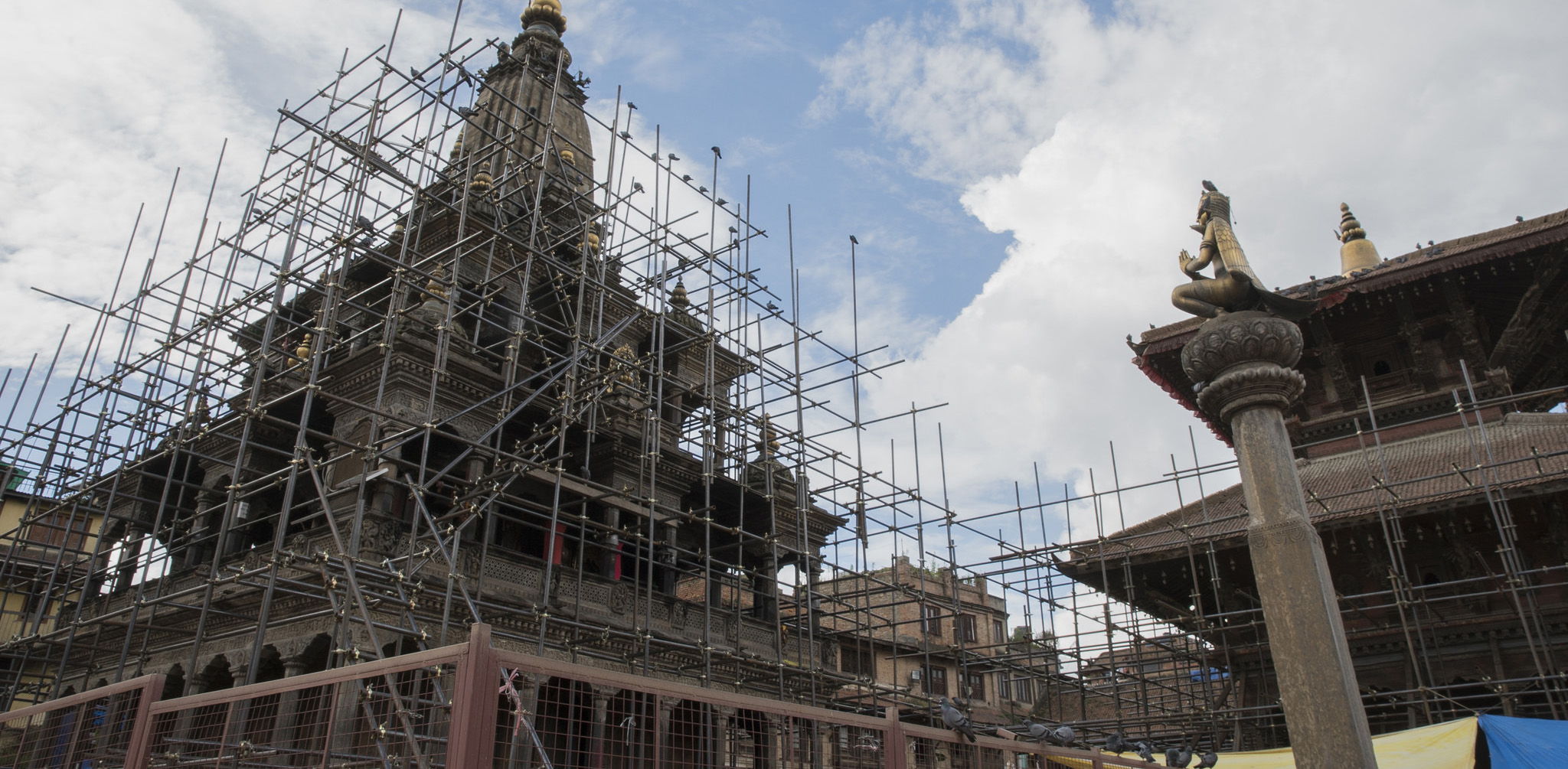
STORY HIGHLIGHTS
- Each year, natural disasters, compounded by climate change and conflict, cause more than $500 billion in losses
- Yet governments, supported by the World Bank, increasingly understand that investing in disaster recovery enables them to "build back better"
- The international community sees the World Reconstruction Conference (WRC3) as a call to action on recovery to make countries even more resilient to disasters
Twenty million people across Africa and the Middle East are currently facing famine from a prolonged drought. Some affected countries, including Somalia, South Sudan, and Yemen, have more in common than vulnerability to recurring natural disasters and a changing climate – they also struggle with fragile political systems ravaged by conflict.
Disasters like this can cripple any country and erase hard-fought development gains. To prevent such devastation, whether social or economic, an effective framework for recovery must be in place before a disaster strikes. Such provisions are even more important in conflict-affected states, and are the focus of the third edition of the World Reconstruction Conference (WRC3) starting today and running through June 8, taking place in Brussels in conjunction with European Development Days 2017.
“For the World Bank, preparing countries to ably address risk and ‘build back better’ from disasters and conflict is central to our goal of sustainable development,” said Cyril Muller, Vice President of the World Bank’s Europe and Central Asia Region. “The World Reconstruction Conference is an important event for the World Bank to help further cement this shift toward planning for crisis situations and strengthening recovery systems in advance of a disaster.”
Ethiopia is an example of resilient crisis recovery planning. A country no stranger to drought, Ethiopia is acknowledging the importance of preparation and has a plan to fight famine before it starts. Armed with hard-learned lessons from previous droughts, the government, with World Bank support, has established one of the world’s largest safety-net programs, alongside other mechanisms, and can quickly expand coverage in times of crisis, protecting even its poorest residents.
Committed to action on disaster and conflict recovery, the Global Facility for Disaster Reduction and Recovery (GFDRR) and development partners including the World Bank, the European Union (EU), and the United Nations (UN) established the World Reconstruction Conference (WRC) in 2011.
Since the forum was first established, there has been a shift in how the international community, including GFDRR and the World Bank, approaches recovery. Rather than focusing on reconstruction alone, governments now integrate reducing disaster risk into long-term planning.
Furthering this work, the second WRC helped bring sharper focus on resilient recovery and "building back better" of the Sendai Framework to reduce vulnerabilities.
“The fragility situation in many parts of the world is becoming seriously exacerbated, and the impact of disasters due to natural hazards is increasing in magnitude and severity,” said Sameh Wahba, World Bank Director of Urban and Territorial Development, Disaster Risk Management, and Resilience. “From 2012 to 2014, 994 disasters affected more than 326 million people across the globe. Costs of physical damage caused by disasters are rising – from an estimated US$20 billion on average per year in the 1990s to about US$100 billion per year in the first decade of this century.”
Wahba added that “The World Reconstruction Conference is a call for action to prepare in advance for better disaster and crisis recovery, especially in fragile countries, and to up our game given the high stakes in terms of saving lives, livelihoods, and reducing economic impact. The World Bank and GFDRR are committed to supporting countries in focusing on this agenda.
Sights and sounds from WRC3
Alongside partners like the EU and the United Nations Development Programme (UNDP), the World Bank has performed post-disaster needs assessments in more than 40 countries, 26 of them fragile – an important first step in understanding how to implement recovery programs. Last year alone, GFDRR supported 17 fragile and conflict-affected countries’ resilience efforts through 35 grants worth $29 million.
Efforts like these are at the heart of WRC3, which convenes more than 500 practitioners from around the world to promote the resilience of countries when faced with disasters. As in previous years, it aims to ensure lessons from the field yesterday are applied to the recovery work of tomorrow. This year, many of those lessons are being shared on the online Recovery Hub platform, launched at the conference. This interactive online tool hosts knowledge documents from across five sectors, sharing insights from past recovery operations.
In addition, WRC3 provides an opportunity to discuss the initial version of a new Local Disaster Recovery Framework (LDRF) Guide, which aims to help local governments set up frameworks for recovery before a disaster strikes. The Guide, which draws on past examples from countries like Colombia, India, and Serbia, will be further refined based on input from WRC3 participants.
These tools serve as important repositories of knowledge, especially as the international community is still looking at how recovery can be implemented most successfully, and how disasters large and small affect countries in the long term.
“A disaster of any size is devastating for the people affected,” emphasized Muller, “but it is also a moment to correct processes that have created vulnerabilities, to ‘build back better’, and, ultimately, to ensure a more resilient future.”
